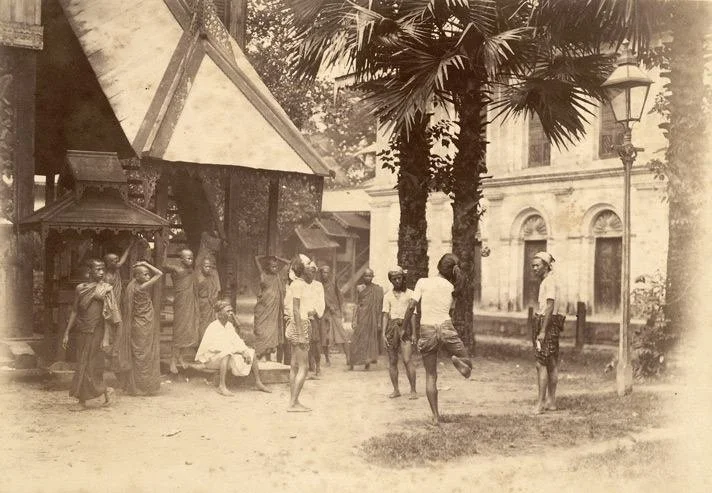Chinlone (ခြင်းလုံး) - The Mesmerizing Traditional Sport of Myanmar
Chinlone, also known as Caneball, is a unique and fascinating traditional sport that originated in Myanmar, formerly known as Burma. It is a non-competitive game that involves a team of six players passing a ball made of woven rattan with their feet and any other part of their body except their hands. The game is played to the rhythm of traditional music, which creates a mesmerizing and enchanting atmosphere.
In Chinlone, players stand in a circle and pass the ball to each other using their feet, knees, thighs, and other parts of their body. The objective is to keep the ball in the air as long as possible and as creatively as possible, without letting it touch the ground. Each player has their own unique style and technique, and the game is a beautiful display of skill, coordination, and grace.
A Game of Chinlone © Guy Sade
The sport of Chinlone is played by men, women and children, often together, interchangeably. Although very fast, Chinlone is meant to be entertaining and fluid, as if it were more of a performance or dance.
In addition to the original form of Chinlone, there is an individual performance style called “Tapandaing”.
Individual “Tapandaing” Performance by Myanmar President U Win Myint (Currently Imprisoned by the Military)
History of Chinlone in Myanmar (Burma)
Chinlone has been played in Myanmar for over 1,500 years and is considered an integral part of the country's culture and identity. It was initially played as a form of entertainment for the royal court, but over time it has become a popular pastime among the general population. Chinlone is heavily influenced by traditional Burmese martial arts and dance, another reason as to why so much importance is placed upon technique.
While Chinlone had been widely considered to be more of a game than an actual sport during the colonial rule, international interest in Chinlone grew rapidly. By the early 1900s, Chinlone teams were performing in parts of Europe and Asia.
In 1953, U Ah Yein, the head of the Burma Athletic Association, spearheaded the creation of an official rulebook for Chinlone. These rules forced Chinlone to become more competitive, and the first official Chinlone competition was held in Yangon that same year. In addition to providing Chinlone with an official set of rules, U Ah Yein's Chinlone rulebook claimed Chinlone to be unique to Myanmar only, as the birthplace of the game.
Chinlone's Relation to Other Regional Sports
While Chinlone does distinctively go back far into Burmese tradition, there are many similar sports closely related to it across many other Southeast Asian countries like Sepak Takraw, which is played using a woven rattan ball and involves passing the ball over a net. However, the key difference between Chinlone and Sepak Takraw is that Chinlone is a non-competitive sport, while Sepak Takraw is a competitive game.
A Competitive Game of Sepak Takraw
Chinlone is a beautiful and mesmerizing traditional sport that showcases Myanmar's rich cultural & heritage. Its origins and history make it an integral part of the country's identity, and its unique gameplay and style make it a must-see for anyone interested in sports and culture.
- - -
www.banyancanopy.com
Proudly Myanmar | ဂုဏ်ယူဝင့်ကြွားစွာ မြန်မာ
#Myanmar #BanyanCanopy #Burma #Burmese #ProudlyMyanmar #Culture #Heritage #History #BurmeseSports #SouthEastAsia #Chinlone #Traditional #Game #Sports #ASEAN #SepakTakraw #MyanmarCulture #MyanmarHistory #MyanmarHeritage #MyanmarFood #BurmeseFood #ArtsCrafts #Lifestyle #Fashion #Accessories #Clothing







